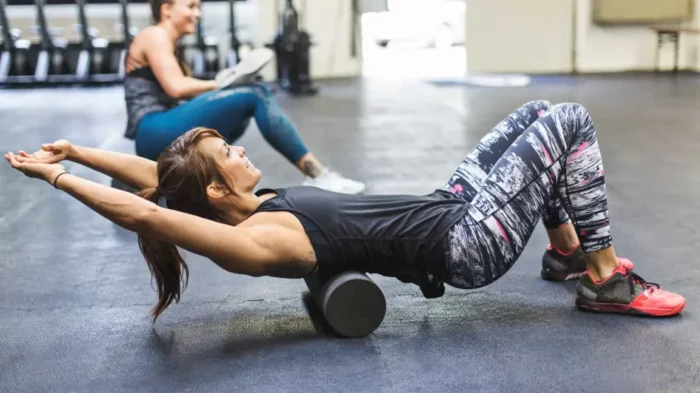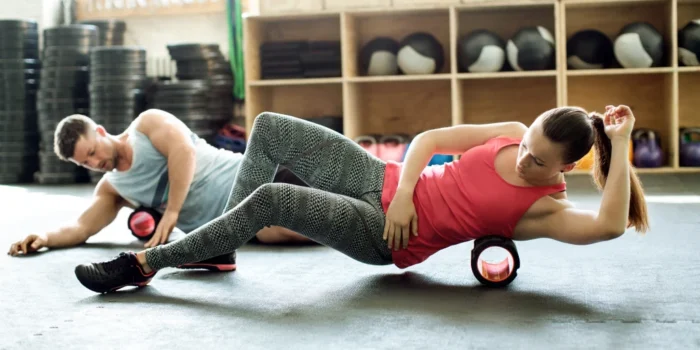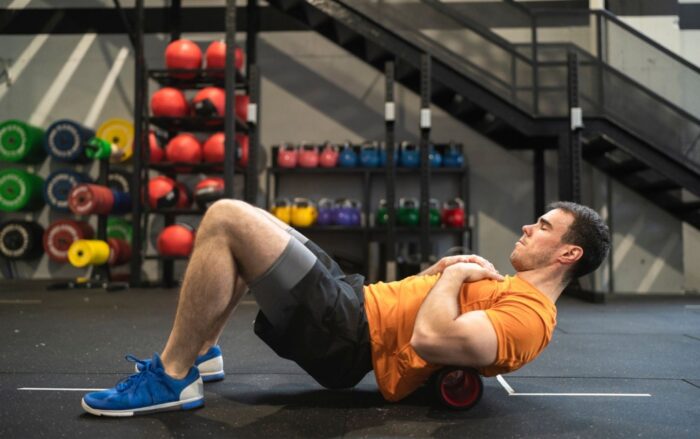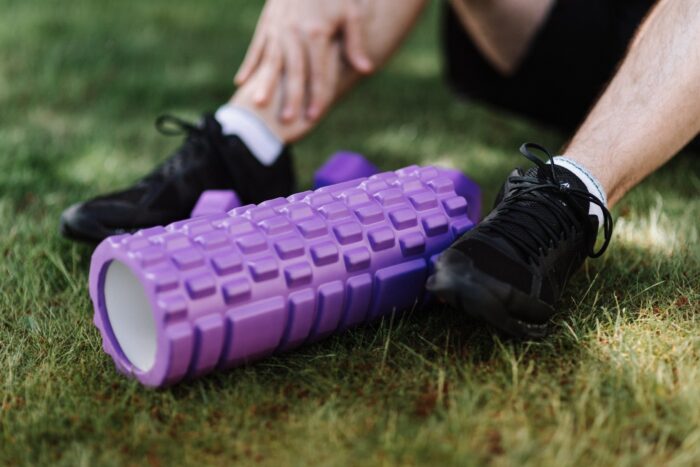The foamy wheel is a standard piece of training equipment that is included in most modern gymnasium environments. They were traditionally made of foam, but they are now created from a variety of materials and come in a variety of forms, designs, and thicknesses. Some are smooth and velvety, while others are stiff and dimpled. It is possible to find a light pressure with vibrations. There is an applicator for everyone, in fact. And you can find the one that suits you even on the internet. As a matter of fact, you can visit this site where you can find lots of great Fitness Equipment Online.
Dynamic stretching is a relatively low-risk approach to maybe increase the effectiveness of your workouts and just feel better, provided you do it correctly. Here are some typical errors to watch out for whether you’re new to myofascial release or simply unsure if you’re doing it correctly.
1. It is quite painful

Source: healthline.com
Static stretching shouldn’t be extremely uncomfortable, unlike what many people think. Experts advise not exercising if you are experiencing any twisted, swollen, or disturbed muscles (not just aching ones!). If it becomes difficult for you to breathe during foam rolling, stop. The more, the worse. A professional evaluation with customized suggestions will always be helpful if you’re unclear about what’s typical.
2. Insufficient or excessive pressure
While static stretching shouldn’t be enjoyable, it also shouldn’t be agonizing. When rolling properly, you should be exerting consistent pressure that causes just minor discomfort. The action should allow you to inhale freely and let your body relax.
3. Too much time spent in one place
Running enthusiasts frequently locate a tight spot and hold onto it for a long time in an effort to “release” it. Even if you find a very small space, you shouldn’t stay there for longer than a minute. The ideal progression is from dynamic to fluid movement, maintaining the tendon over the roller for the first thirty seconds while exerting steady pressure, followed by the use of tiny, rear, and edge motions to cover the entire fascia.
4. Too demanding on chilly muscles

Source: nbcnews.com
Your muscles should ideally be heated up just before you get on your foamy wheel, but if they aren’t, be sure to ease into it with light pressure before attempting to go any further. Targeting a weak tissue could result in bruising it, which is more detrimental than beneficial.
5. Firstly rolling knots
It’s common for runners to start foam rolling by targeting their most prominent, tightest knots, but this isn’t the best (or safest) method to attack your problem regions. Coil the fascia both around and beyond the knot first, instead. It will become more flexible as a result, making it simpler for you to truly release the curl in your tendon.
6. Rolling a wound
A muscle that has previously been stretched or injured should not be subjected to additional stress by using a foam roller. Speak with a physiotherapist or other sports medicine expert who can assist you on the appropriate path of therapeutic intervention for your condition and the places where dynamic stretching would be most effective.
7. Beginning in the wrong place

Source: tomsguide.com
Always begin foam rolling in more comfortable locations and work your way slowly toward tighter areas. Roll away from the muscle’s origin when rolling at a particular location. Typically, this entails beginning as close to your core as possible; for example, if rotating your quad, you would begin close to the pelvis and roll toward your knee.
8. Going too quickly
Dynamic stretching is not something you can do hastily and carelessly to cross it all off your to-do list, nor is it an activity you should do in a race. Take your time, be aware of any tension-holding regions, and try to move through them gently. Rushing is not the right approach.
9. Beginning with a strong roller
It’s an excellent notion to commence with something less intense until you become accustomed to it, even though you may want to grab for an especially firm foam roller. Employ a light pressure on its softer side when you are initially beginning. You can start utilizing a denser roll as you get more at ease and get familiar with various ways.
10. You don’t consistently do it

Source: myfitnesspal.com
Start foam rolling every day if you only do it sometimes. When the full-body advantages start to actually manifest, that is. Polyurethane roller can be done whenever you feel constrained or for the overall health of your soft tissues. Foam rolling can be used every day if done properly for 2 minutes at each location, with movement instead of steady pressure, and with rhythmic breathing.
Advantages to dynamic stretching
Foam rolling has lots of advantages. Some of them are written down below. Have a look:
1. Enhancing the transport of nutrients and water through muscles
Dynamic stretching can help nutrients and water pass more easily through the tissues because it causes tension changes in the muscle tissues. When the motor is in position, pressure rises; when it is taken out, the pressure falls. Furthermore, the roller movement creates tension variations in different neuromuscular areas, which facilitates the passage of water and nutrients through the tissue. While stagnant water denotes toxicity and poison, moving water is a symbol of life.
2. Increases blood vessel elasticity
In addition to improving the elasticity and flexibility of the muscles and fascia, the aforementioned pressure changes may also help to increase the vascular system’s (circulatory system) flexibility and suppleness. When the blood flow needs to be increased, the walls of the vascular system, especially arteries, have elastic properties that allow them to expand and broaden. According to evidence, applying and relieving stress on the ligament may also influence the pulse rate in that location to increase and decrease.

Source: medium.com
3. Activating muscles that aren’t moving
Dynamic stretching, which can be an effective approach to doing so, can improve the consciousness of components that were switched off simply because they were not being utilized by the mind and neurologic system. Motor amnesia, which causes a momentary loss of motor control, frequently develops in regions that aren’t used enough. Muscle fibers that should not be employed are routinely recruited in compensatory movements, and dysfunction and soreness are rarely behind. By rolling out unused muscles (such as deep gluteal muscles), we can revive these tissues and return the body to its illustrious past. This is especially true if we can teach the system how to do so through movement.
